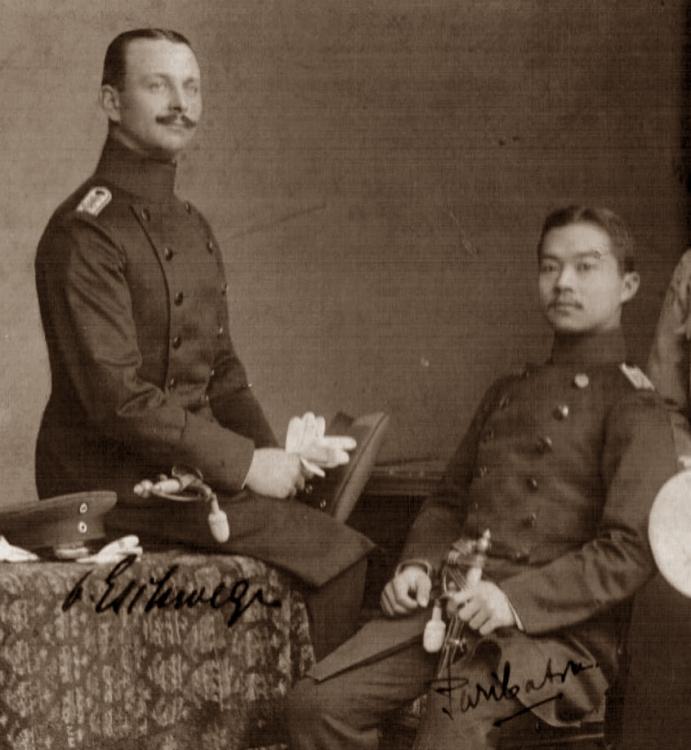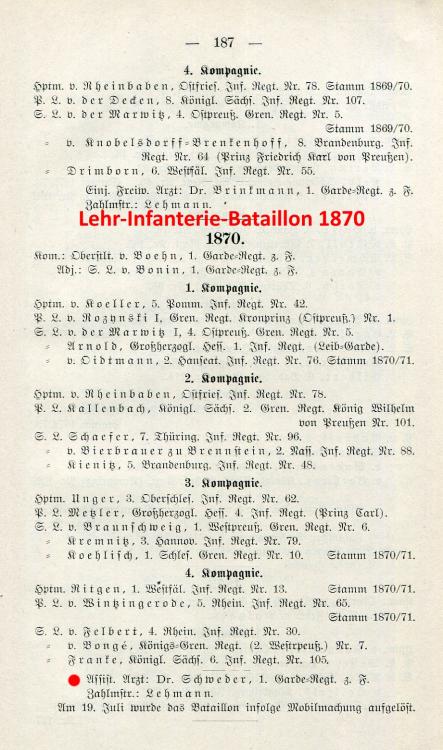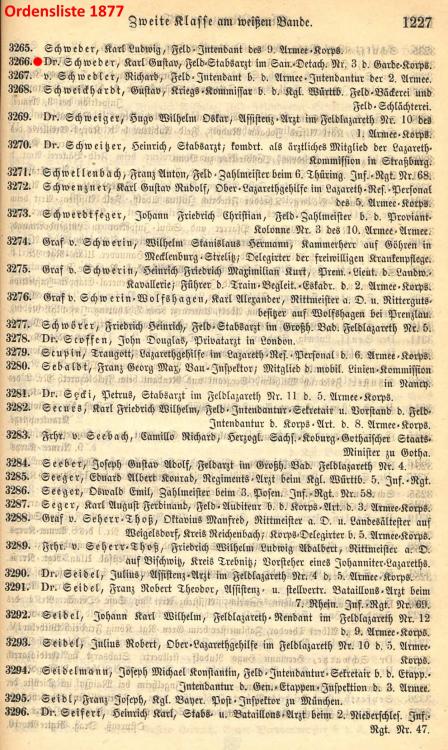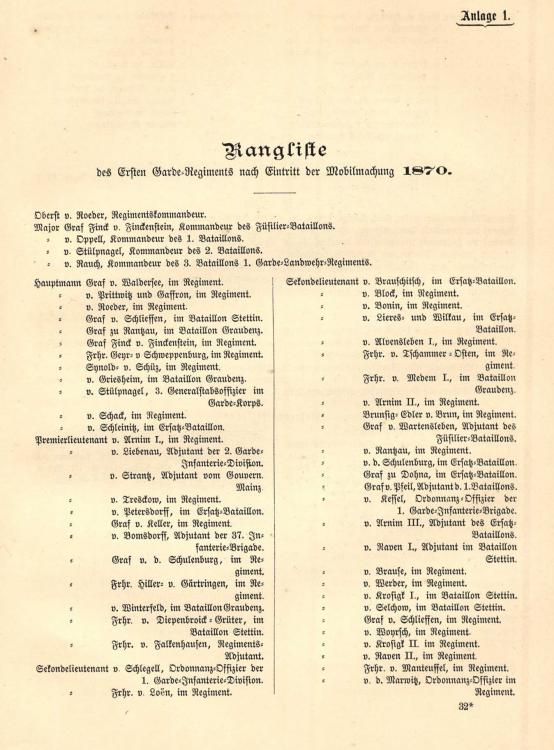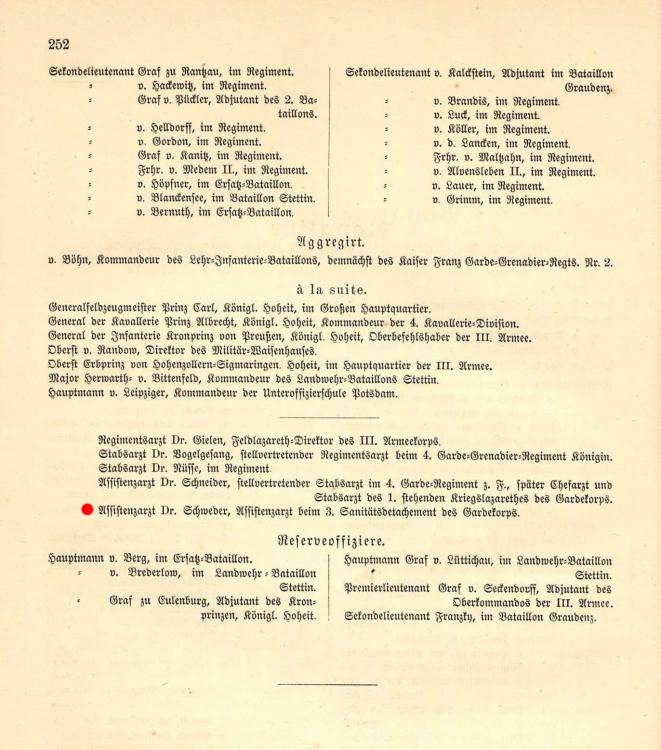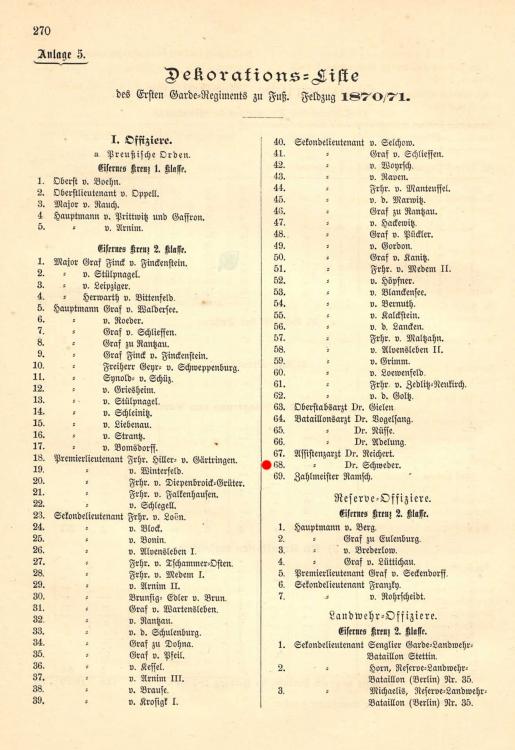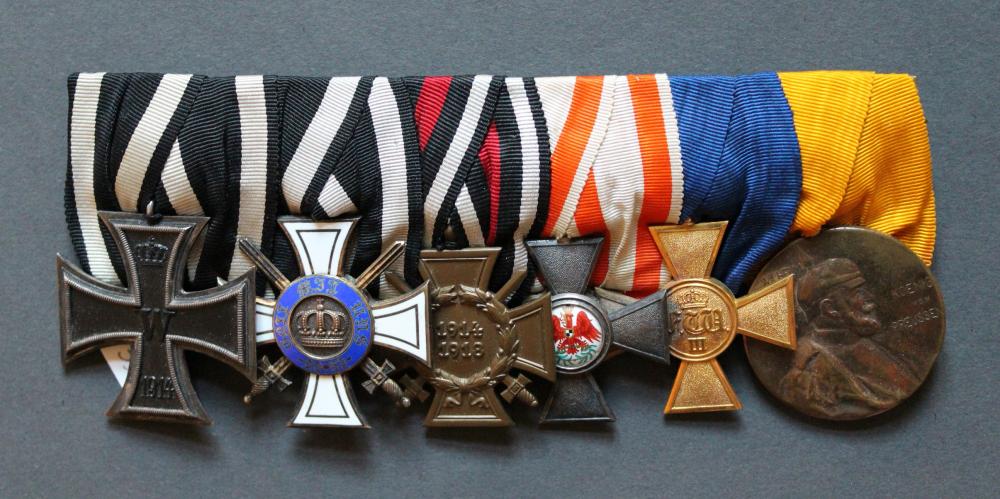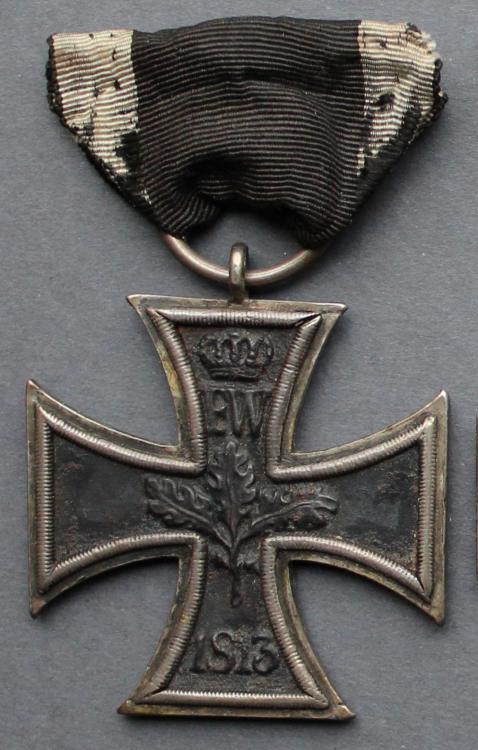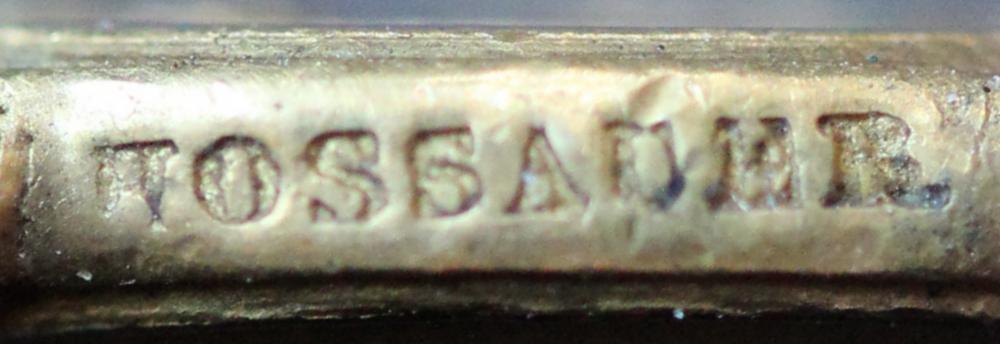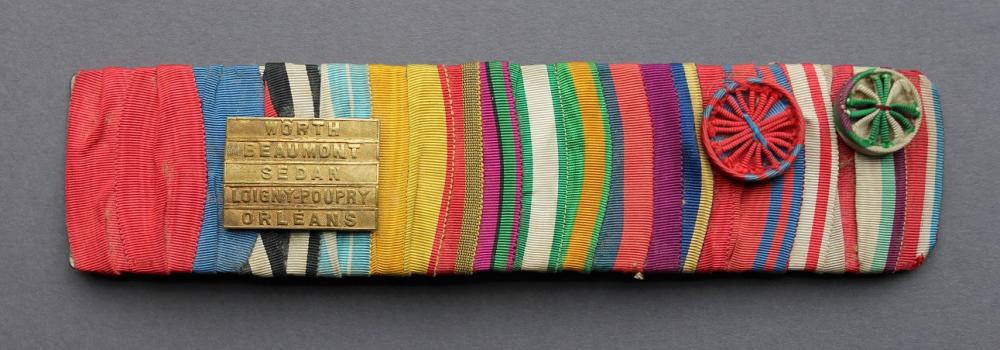-
Posts
1,291 -
Joined
-
Last visited
-
Days Won
20
Content Type
Profiles
Forums
Blogs
Gallery
Events
Store
Everything posted by Komtur
-
Because of its thickness I have no problem with this very nice cross. There were some different jewelers making this cross over the years: 1852-1859 Hossauer / Berlin, he sold his company to Sy & Wagner in 1859 1859-1887 Sy & Wagner / Berlin, they were to expensive, therefore the princly Hohezollern changed to: 1887-1892 S. Friedeberg Söhne / Berlin, company sold to Gebr. Friedländer in 1892 1892-1910 Gebr. Friedländer / Berlin, they were to expensive, therefore the princly Hohezollern changed to: 1910-???? J.G. Zimmerer Sohn / Sigmaringen, probable they did not produce the order by themthelves, but bought them from the company Zimmermann / Pforzheim ????-???? J. Godet & Sohn / Berlin, late producers, probably as recently as after 1918 ????-???? Gebr. Hemmerle / München, late producers, probably as recently as after 1918 Even if we can assume, that Hossauer gave his tools to Sy&Wagner in 1859 and S. Friedeberg did the same to Gebr. Friedländer in 1892, there should be at least five different versions of this order over the time. There are documents indicating, that very often returned decorations were repaired and awarded again. Therefore we must also expect chimaeras between different versions. Source (very recommendable): Link, Eva and Gauggel, Heinz: Fürstlich Hohenzollernsche Orden und Ehrenzeichen. Fridingen 1985. Regards, Komtur. PS: So please, before smashing it, send it back to old Germany
-
It should be a person in service for the Duchy Saxe-Coburg and Gotha because of position 2, 4 and 5 of the bar. Additionaly there is a tight connection to Bulgaria via Zar Ferdinand from the catholic tribe of this family. Therefore the linked Court and State book from the Grandduchy Saxe (-Weimar) in post 13 will not be of much use. Unfortunately there seem to be no later Court and State book of Saxe-Coburg and Gotha then 1907. I am afraid that the person we are looking for got most of his decorations after 1907, so we will have no luck with this source. He was a NCO for some years, but after this he must be in a higher civil rank, may be in personel connection with the ducal family of Saxe-Coburg and Gotha. They gave their familiy order as well after 1918 till the early 1930-ies. May be he got the knight 2nd class of the house order in that time.
-
Very fine and I am happy, that you got this one . It was the only lot, I would be interested in, but I was saturated for this year. Because of this before the auction I only had an unsuccessful glance on the lists. But I think, the former owner of this bar should be traceable. A navy medical officer is very likely.
-
As stated before by Andreas this person is wearing on the second position the Red Eagle Order Medal on the ribbon of the Royal House Order of Hohenzollern. The medal was given with this ribbon only to the members of the Stabswache des Großen Hauptquartiers after the campaign against France in 1870/71 directly from the king on the 29th of April 1871. The Stabswache was formed by the beginning of the war from the personnel of the then dissolved Lehr-Infanterie-Bataillon. There is no doubt, that this person is a medical officer in the rank of an Assistenzarzt, posing in Berlin for this photo before the Kriegsdenkmünze for this war was issued first in mid June 1871 on the victory parade in Berlin. Therefore the picture originate from May 1871 to the point he got his commemorative medal for this war some weeks or month later. Before the personnel of the Lehr-Infanterie-Bataillons partly was used to built up the Stabswache, there was a Assistenzarzt Gustav Schweder detached to this unit. He got the Iron Cross 2nd class on the white ribbon and is listed for the war in the Sanitätsdetachement Nr. 3 of the Gardekorps. Every German Armeekorps had three of these Sanitätsdetachements, Nr. 3 was always responible for the service of the Commander. It is very likely, that Dr. Schweder was responsible for the medical supply of the Stabswache and therefore got the Red Eagle Order Medal on the ribbon of the Royal House Order of Hohenzollern and ordered this picture back in Berlin in summer 1871.
-
Could you please tell me, how to recognize a Zimmermann made cross and what time of farbrication exactly means early? Thanks in advance!
-
Thanks for that substantial comment to the available sources about recipients of Serbian decorations. So we are missing Serbian periodicals, like staats almanacs, court calendars or order lists. So it seems to be really hard to find especially foreign persons among the recipients. In the past I often successfull researched medal bars or decorated persons on portrait fotographs of my own collection and for other collectors too. Therefore I know the expenditure of time one need for this kind of work. Thats the reason I really appreciate your help .
-
In between I got the hint of the Greek Wikipedia biografie of Ioannis Metaxas. In the second part of his biographie about his military career there is mentioned, that he got in 1913 that order! Until now I can verify five of seven decoration on this bar for Metaxas (position 1, 2, 4, 5, 6). Because of his activities for the military convention with Serbia I assume, Metaxas could have gotten a Serbian order after May 1913, when this convention was signed. Could this information be of use, to search again in your sources for a possible award of the Serbian White Eagle Order to Major or Lieutenant-Colonel Metaxas? Many thanks in advance!
-
Lieutenant Colonel Johann Metaxas got this cross in the gold version according to a biografie of him in September 1914. Metaxas was at this time Chief of Operations at GHQ and the closest ally to King Constantine I. and the center figure of the Greek royalist party. BTW the king wore his medal bar at this time also in German Style So Metaxas seems to be a quite hot candidate for my medal bar...
-
From 1903 on I found these Greek officers as recipients of the 3rd class Prussian Crown Order: 15.4.1904 Polyzòys, Kgl. griech. Korvettenkapitän 12.4.1905 Orphanidis, Kgl. griech. Hautpm. und Adjutant 12.4.1905 Valvis, Kgl. griech. Hauptm., Adjutant des Chefs der Gendarmerie 12.4.1905 Zymbrakakis, Kgl. griech. Hauptm. der Gendarmerie 12.4.1905 Spyracos, Kgl. griech. Hauptm. der Inf. 12.4.1905 Negrepontis, Kgl. griech. Hauptm. der Ingenieure 12.4.1905 Bouboulis, Kgl. griech. Kapitänleutnant 12.4.1905 Zochios, Kgl. griech. Kapitänleutnant 15.9.1905 Hatzanestis, Kgl. griech. Hautpmann im Generalstabe 27.4.1908 Troupaki, Nikola, Kgl. griech. Hauptm. In der Gendarmerie 27.4.1908 Bellini, Nikolas, Kgl. griech. Kapitänleutnant 27.4.1908 Paparigopoulo, Etienne, Kgl. griech. Kapitänleutnant 27.4.1908 Andreadis, Anastasios, Kgl. griech. Kapitänleutnant 3.5.1909 Levidis, Constantin, Kgl. griech. Hauptm. der Art., Flügeladjut. des Kronprinzen 3.5.1909 Skouffos, Georges, Kgl. griech. Hauptm. vom Genie, Adjut. des Kronprinzen 24.4.1911 Mantzagriotakis Jatrou, Constantin, Kgl. griech. Gend. Major Polizeidirektor in Corfu 2.5.1912 Metaxas, Johann, Kgl. griech. Hauptm., Adjut. des Kriegsministers 3.9.1913 Krièzi, A. Kgl. griech. Kapitänleutnant 10.9.1914 Saliotis, Kgl. griech. Hauptmann im Kriegsministerium 13.11.1914 Lévidis, N. Kgl. griech. Major der Kavallerie The red marked persons IMHO would be suspects for a Godet-mounted bar made in Berlin. Captain Johann Metaxas was in May 1913 responsible for the military convention between Greece and Serbia. This could be a reason for receiving a Serbian decoration. Besides this he had a close relation to Crown Prince Constantine and especially to his wife Princess Sophie of Prussia.
-
Many thanks for trying! I am still working on the Greek recipients of the 3rd class of the Prussian Crown Order. As far, as I can estimate, there will be about 30 candidates. Therefore I need another source to fix it to one person.
-
You are right (See picture of reverse). There must be a relation to King Konstantin I. of Greece, who was married with Sophie of Prussia, a sister of Wilhelm II, in 1889. Konstantin became king in 1913, unfortunately there is a long period of possible occasions for exchanging decorations, like reciprocal family visits. It would be very kind, if you could look for Greek military recipients of the Serbian White Eagle Order. In between I will look for these persons with a Crown Order 3rd class in the Prussian Order Lists, to double check your findings. BTW the medal bar was arranged by the German company J. Godet & Sohn, Berlin. Thanks in advance!
-
Thanks Paul, but I don´t think that will work. The Ordens Almanach (latest edition 1908/9) mostly listed German recipients. Additionaly it is more likely, that the Crown Order is of later date. The Greek medals are for the wars against Turkey 1912/13 and Bulgaria 1913
-
For some years I have a medal bar with matching miniature chain in my collection, belonging to a greek officer from the early 20th century. I wonder, if there is a way to attribute this bar to a single person. Are there sources to be found, like greek order lists or rank lists? Any help is appreciated! Komtur.




